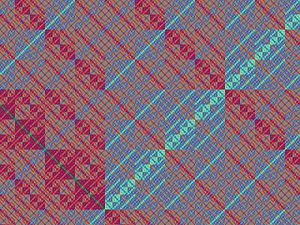Coding theory facts for kids
Coding theory is the study of the properties of codes and their respective fitness for specific applications. Codes are used for data compression, cryptography, error-correction, and networking. Codes are studied by various scientific disciplines—such as information theory, electrical engineering, mathematics, linguistics, and computer science—for the purpose of designing efficient and reliable data transmission methods.
There are four types of coding:
- Data compression (or, source coding)
- Error correction (or channel coding)
- Cryptographic coding
- Line coding
Data compression attempts to compress the data from a source in order to transmit it more efficiently. For example, Zip data compression makes data files smaller to reduce Internet traffic. Data compression and error correction may be studied in combination.
Error correction adds extra data bits to make the transmission of data more robust to disturbances present on the transmission channel. The ordinary user may not be aware of many applications using error correction. A typical music CD uses the Reed-Solomon code to correct for scratches and dust. In this application the transmission channel is the CD itself. Cell phones also use coding techniques to correct for the fading and noise of high frequency radio transmission. Data modems, telephone transmissions, and NASA all employ channel coding techniques to get the bits through.
History of coding theory
In 1948, Claude Shannon published "A Mathematical Theory of Communication", an article in the Bell System Technical Journal. This work focuses on the problem of how best to encode the information a sender wants to transmit. The binary Golay code was developed in 1949.
See also
 In Spanish: Teoría de códigos para niños
In Spanish: Teoría de códigos para niños


